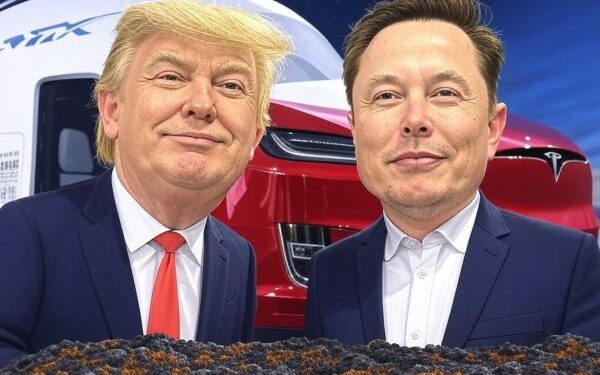How Trump’s Tariffs Are Reshaping American Power
The “Tariff Liberation Day” on April 2, 2025, under Donald Trump’s leadership, marks a bold shift in U.S. policy. Beyond the aggressive trade stance lies the “real strategy of the USA”: a blend of economic nationalism, geopolitical leverage, and technological dominance. This article explores where this strategy is heading and its impact on the U.S. and the world.
What Is Economic Nationalism?
Economic nationalism, a cornerstone of the “America First” agenda, aims to boost domestic production and reduce reliance on foreign goods. Tariffs—25% on cars, 10-25% on imports from Canada, Mexico, and China—are Trump’s tools to revive industries like steel and automotive manufacturing.
“I want German car companies to become American, building their cars here,” Trump declared, signaling his intent to reshape the global economy.
Yet, this strategy goes beyond mere market protection. It’s a plan to reposition the U.S. as the center of global power, even at a short-term cost.
The Real Strategy of the USA: Three Pillars
1. Economic Self-Sufficiency
Tariffs push companies to bring production back to the U.S. Tesla, for instance, is already expanding its U.S. factories. However, replacing the $427 billion in Chinese goods imported annually could take decades. Prices for American consumers may surge by 40-60%, from cars to electronics, risking a drop in demand.
2. Geopolitical Dominance
Beyond trade, the strategy uses tariffs as leverage. The EU is preparing retaliation, China has imposed 10-15% tariffs, and Canada and Mexico threaten 25% countermeasures. If the world coordinates, it could replace U.S. products, while America struggles to find alternatives due to its limited manufacturing base. This gamble aims to force nations to negotiate on Washington’s terms.
3. Technological Supremacy
Enter Elon Musk. His supposed “withdrawal” from the political spotlight is likely a tactical move to focus on innovation through SpaceX, Tesla, and xAI. As explored in Vasilis Kopsachilis’ book Geo-Entrepreneurs: From Jason to Elon Musk, technology is key to long-term U.S. dominance, especially against China. Starlink satellites and AI advancements bolster America’s edge in defense and digital economy.
Where Will the Trade War Lead?
Short-Term Fallout
Americans will feel the pinch. The Tax Foundation predicts a 0.7% GDP drop and 500,000 job losses, while Wall Street saw declines (Nasdaq -2.6%). Retaliation from the EU, China, and neighbors could spark recessions, especially in Canada and Mexico.
Long-Term Outlook
If successful, economic nationalism could restore U.S. industrial might. Investors might return, lured by tax breaks and technological leadership. But if it fails, isolation could empower alternative blocs like the EU-China axis, leaving America behind.
Will Companies Return to the U.S.?
Tariffs pressure firms like Ford and Apple to rethink production. Yet, high labor costs and Asia’s complex supply chains pose challenges.
“Building a factory in the U.S. takes years and billions,” analysts note, highlighting the difficulty.
Partial relocation is possible, but a full return seems unlikely.
Conclusion
The real strategy of the USA merges economic nationalism with geopolitical pressure and technological innovation. It’s a high-stakes gamble: it could reshape the global order in America’s favor or lead to isolation and chaos. Musk’s role, tactical or not, remains pivotal to this ambitious agenda.

